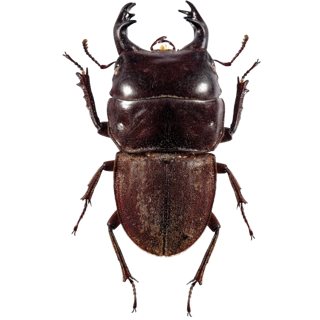Text



1, 2, 3
775 notes
·
View notes
Text
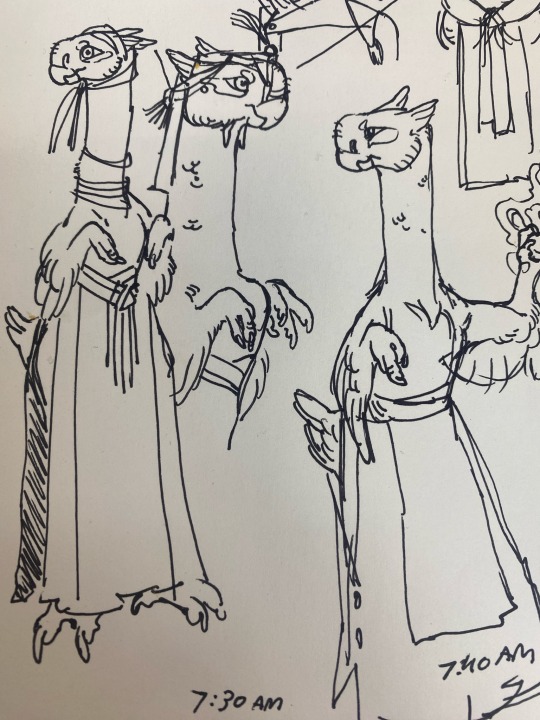
Strider garb ideas..
28 notes
·
View notes
Photo

wine cellar caves | Pietragalla, Italy
26K notes
·
View notes
Photo

The Hill by Por Pathompat. Mù Cang Chải District, Vietnam
35K notes
·
View notes
Text
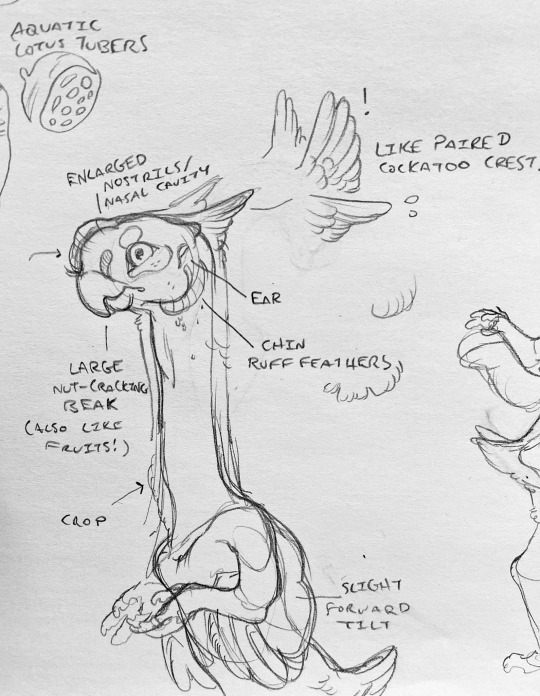
Thinking about anatomy and feathers
11 notes
·
View notes
Text
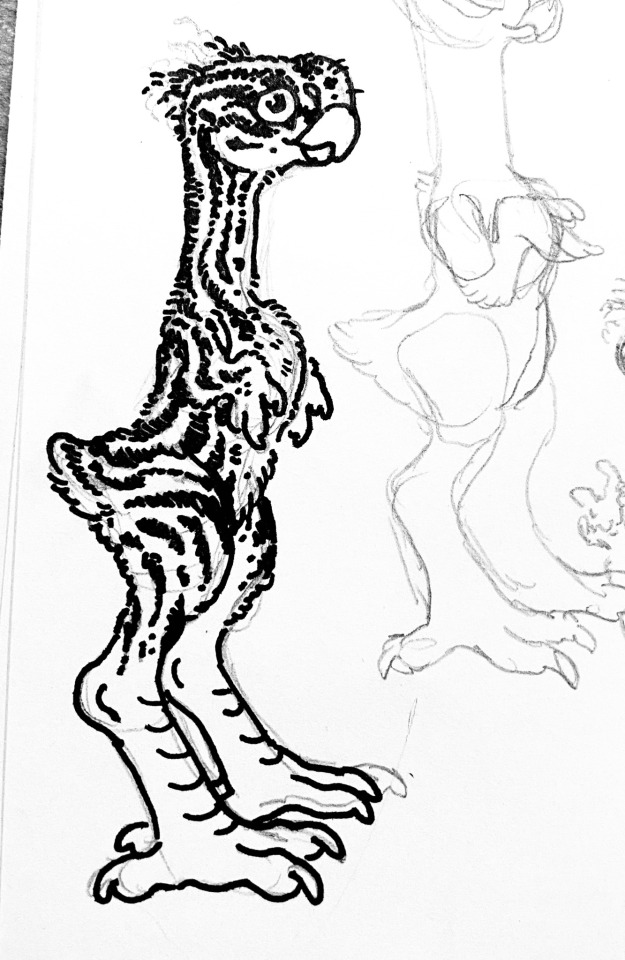
A strange little fluffbottom
Thinking about Strider babies; since they are flightless and spend a lot of time walking, it makes more sense for them to be precocial in order to keep up with the flock while foraging. They would be able to stand and walk straight out of the egg, like cranes and pheasants. While modern Striders may supervise and coddle their young, keeping them in the nest and within the safe architecture (arbortecture?) of mangrove colonies, their ancestors would have relied on moving frequently between natural cover and fertile foraging grounds.
It will be fun to design some stripey cryptic coloration that will help the young hide among marsh grasses and tree roots. They’ll molt into white adult feathers as they age, maybe with an intermediate adolescent plumage that lasts a year or two like gulls?
Also wondering if their diet of fruit, grains and nuts would have any concentrated pigments to inform display coloration/ pops of color on hidden parts of the white plumage (inner wings, under ear tufts)
#pen and ink#speculative biology#character design#creature design#speculative evolution#avian species#birdfolk#striders#my art
3 notes
·
View notes
Text
Sometimes it occurs to me that it’s kind of an utterly bananas hobby to create a fictional world with cultures, farming, civilizations, architecture, and entirely new species that require hours of research and frustrating creative iterations to make it feel synergistic and plausible- for fun
#I’m having fun I swear but making a Whole World#or at least a decently fleshed out part of it#is a huge task!! what!!#worldbuilding
2 notes
·
View notes
Text

Strider movement/poses ideas
#worldbuilding#fantasy species#birdfolk#striders#world in progress#sketchbook#speculative biology#character design#creature design
7 notes
·
View notes
Text
I think all this time I’ve been imagining them as white like egrets or cockatoos. Which seems boring but I think it just fits best. Maybe flashes of color are revealed in the underwing and when the paired crests extend. And I have to decide if there’s distinct sexual dimorphism or seasonal display feathers.. never mind getting into clothing/textiles/personal ornamentation..

I've been agonizing over deciding on plumage for these guys, and I'm still not sure if I'm 100% happy with these options. I know I don't want the bright primary colors of Macaws, or for them to be 1:1 representations of real birds (though the American Avocet colors on #4 were a fun exercise). They also shouldn't be overly detailed - I want them to be fun to draw, not a slog. I was also thinking about how extending the arm shows the usually-hidden inner wing and thought it might be fun to have a contrasty, flashy display in there (though the facial skin is the main display of fitness and emotion).
I think I might narrow it down to the last two as common pattern variants, and experiment with alternate color schemes or pigment mutations.
They are a temperate marshland species, so I stuck with mostly browns and greys to make them feel more commonplace and not overly tropical due to their other similarities with parrots. Incidentally some of the color and facial patterns I gravitated to remind me of Killdeer and Plovers, which live in marshy habitats.
As always feel free to reblog and leave your thoughts and comments!
68 notes
·
View notes
Text
Thinking about Strider babies; since they are flightless and spend a lot of time walking, it makes more sense for them to be precocial in order to keep up with the flock while foraging. They would be able to stand and walk straight out of the egg, like cranes and pheasants. While modern Striders may supervise and coddle their young, keeping them in the nest and within the safe architecture (arbortecture?) of mangrove colonies, their ancestors would have relied on moving frequently between natural cover and fertile foraging grounds.
It will be fun to design some stripey cryptic coloration that will help the young hide among marsh grasses and tree roots. They’ll molt into white adult feathers as they age, maybe with an intermediate adolescent plumage that lasts a year or two like gulls?
Also wondering if their diet of fruit, grains and nuts would have any concentrated pigments to inform display coloration/ pops of color on hidden parts of the white plumage (inner wings, under ear tufts)
3 notes
·
View notes
Text
Botanical Beads!
I have stumbled upon this minimalist website cataloging various beads made from plants, and I am so excited to try some of these out, and experiment more with what's around.
This datura seed necklace is amazing and kinda scary.

Dyed acorn beads from Botswana!


This is coconuts. Somehow.

The shit people have done with walnuts is pretty amazing.



I'm definitely going to be keeping these in mind as I go about my plant doings.
1K notes
·
View notes
Text
Tree Circus



Axel Erlandson was an arborsculptor, meaning he grew trees and shaped them to form ladders, towers, spiral staircases, cathedral windows, even chairs! The Tree Circus lived in a road-side attraction outside Santa Cruz, CA until after Erlandson’s death in 1964 when they were moved to Gilroy Gardens.
2K notes
·
View notes
Text
Giant Emerald Pill-Millipede: when these enormous millipedes are all rolled up, their bodies can be as big as a baseball, a tennis ball, or a small orange

This species (Zoosphaerium neptunus) is commonly known as a giant emerald pill-millipede. The females can measure up to 90mm long (roughly 3.5 inches), making this the largest species of pill-millipede in the world.

There is a significant degree of sexual dimorphism in this species, with the males measuring only about 45mm (1.8 inches) long -- roughly half the size of the females.
Giant emerald pill-millipedes are found only in Madagascar, which is home to several endemic species of giant pill-millipedes (order Sphaerotheriida). The Malagasy name for giant pill-millipedes is "Tainkintana," which means "shooting-star."

Pill-millipedes use conglobation as a defense mechanism, which means that they can curl their bodies up into a spherical shape so that their dorsal plates form a protective shield around the softer, more vulnerable parts of their bodies, just like an actual pill-bug or a "roly-poly."
When they roll themselves up completely, they look almost like gently polished chunks of malachite, emerald, or jade.

Giant emerald pill-millipedes will sometimes form large swarms that travel together as a group. This is the only species of giant pill-millipede that engages in any sort of swarming behavior, and the purpose of that behavior is still unclear. The swarms often contain thousands of individuals, with almost all of them moving in the same direction, even when there is no physical contact that might allow the millipedes to "herd" one another along.
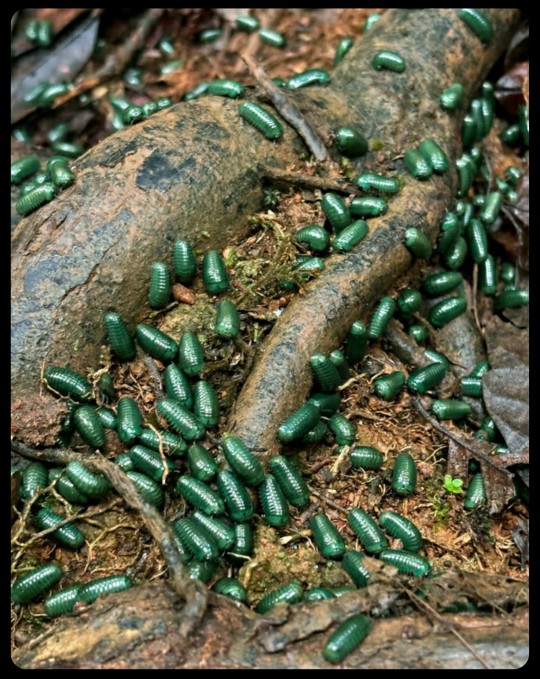
Their swarming behavior also has some very peculiar features, as this article explains:
During swarming, Zoosphaerium neptunus individuals pay little attention to their surroundings; many specimens were observed walking straight into and drowning in small puddles. Some swarms even display ‘cliché lemming behaviour:' in Marojejy, a large part of a swarm walked into and drowned in a small river.
No single specimen was observed walking ‘against the current,' all specimens were moving in the same direction (southeast), even when not in contact with one another.
Of 273 randomly collected individuals, 105 were males, while 168 were females. The males were 8.3 - 14.1 mm wide (average width 10.4 mm). According to the inner horns of the posterior telopods, all males were sexually mature. The females were 9.95 - 15.4 mm wide (average width 11.4 mm). All females displayed non sclerotized vulvae and were sexually immature.
Some researchers argue that the swarming serves as a defense mechanism, providing a layer of protection (or at least some cryptic cover) against local predators, but the swarming behavior is still poorly understood.

Important Note: I just want to remind everyone that these animals belong in their own natural habitat -- they should not be trapped, bought/sold, traded, shipped, collected, or kept as pets. This particular species does not survive well in captivity, either, and the demand for these "exotic" invertebrates is putting the wild populations in jeopardy. The previous article discusses those issues, too:
Another possible threat for Z. neptunus swarms are collections for the pet trade. There exists a large demand in Japan, Europe and North America for 'green -eyed monsters’ as pets. Giant pill -millipedes from Madagascar unfortunately have a very short survival time in terraria. The species is specialized on low-energy food (dead leaves), and adapted to the cool climates (<20°C) of the highlands. Specimens in terraria often starve to death quickly.
So I know that they're adorable and really, really fascinating...but let's just let them be their chunky, adorable little selves out in the wild where they belong.
Sources & More Info:
European Journal of Taxonomy: Seven New Giant Pill-Millipede Species and New Records of the Genus Zoosphaerium from Madagascar
Madagascar Conservation & Development: Swarming Behavior in the World's Largest Giant Pill-Millipede, Z. neptunus, and its Implication for Conservation Efforts
Bonn Zoological Bulletin Supplementum: The Giant Millipedes, Order Sphaerotheriida (an Annotated Species Catalogue) (PDF)
African Invertebrates: Madagascar's Living Giants: Discovery of Five New Species of Endemic Giant Pill-Millipedes from Madagascar (PDF)
10K notes
·
View notes
Text
Notes for drawing (and writing) insects
I do something like this almost yearly and it feels like it gets a little longer every time!
Personally I draw either cartoony stuff or hybrid monsters where none of this is mandatory, but here are some of the things I sometimes see missing or inaccurate in insect artwork that was meant to be lifelike, and even if you only do alien, monster or cartoon arthropods, or you don’t make art at all, you might still like to know some of these things!
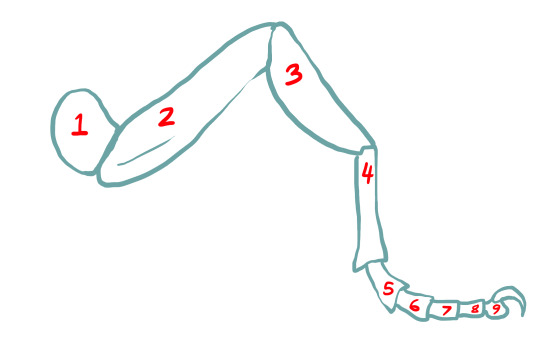
First off, an insect leg pretty much always has 9 segments. #1, the coxa, is what attaches it to the body and can be a short little “ball” or a whole long piece, but almost always bends DOWN. The last five segments are almost always very short, forming a super flexible “foot” or “tarsus” ending in a set of claws and sticky pads. All spiders have this “foot” as well!
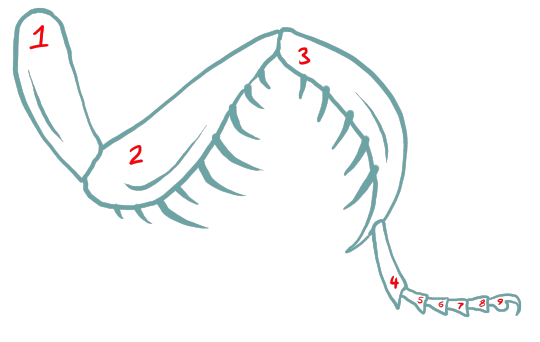
The foot is even still present on the claws of a preying mantis - growing right out of the “sickle” like this, and still used as feet when the mantis walks around or climbs. Basically ONLY CRABS have limbs ending in simple points!
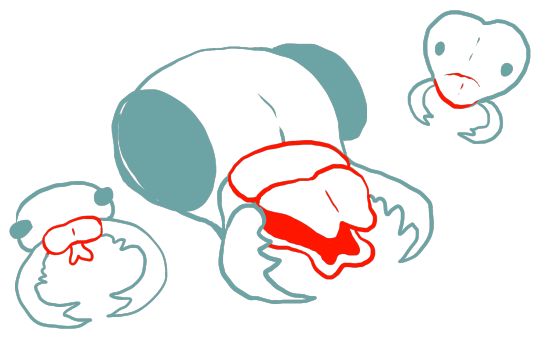
Insects don’t just have side-to-side mandibles at all, but an upper and lower set of “lips” like a duck bill! In some, however, these parts can be very small or even fused solid.
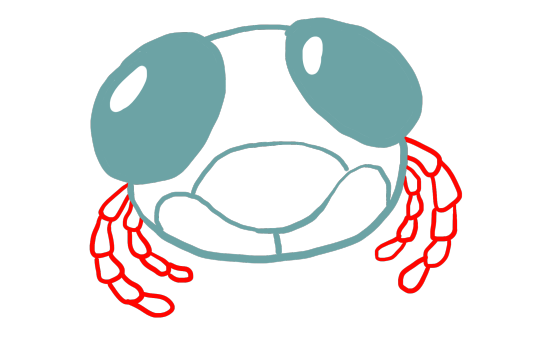
Insects also typically have four “palps” on their head, an upper and lower pair, which evolved from legs and are used to handle food!
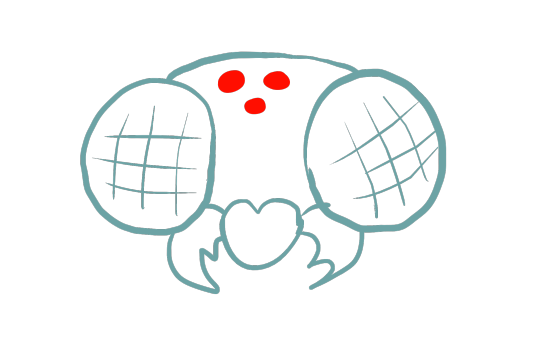
Most *FLYING* insects have ocelli, single-lens eyes in addition to their multi-faceted compound eyes! Some flightless insects can also have them but it depends on the species.
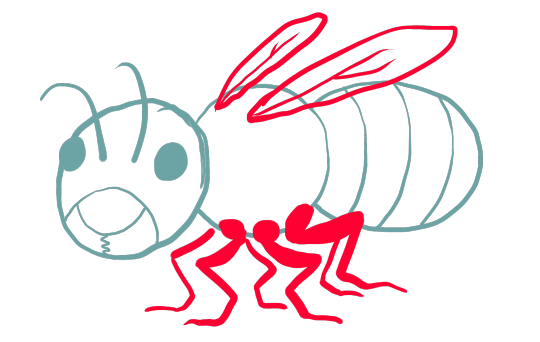
All legs and wings are always attached to the thorax!
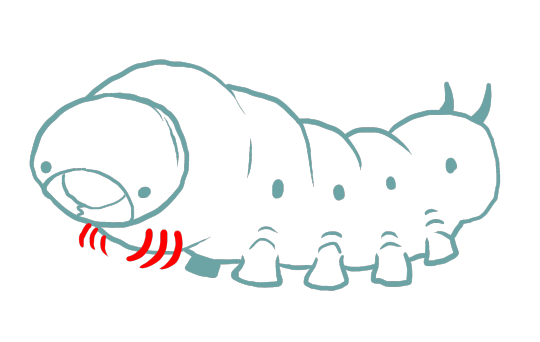
Caterpillars still have six legs! They’re very small and up near the head. All the other “legs” are actually just suckers on its underbelly.
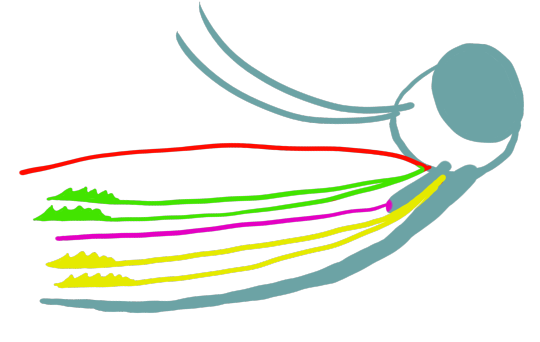
You will be forgiven for never drawing this but this is how many parts a mosquito’s mouth actually has. Every piece you can find in another insect’s mouth - the “upper lip,” the mandibles, the palps, etc. - are all present as different needles and blades!
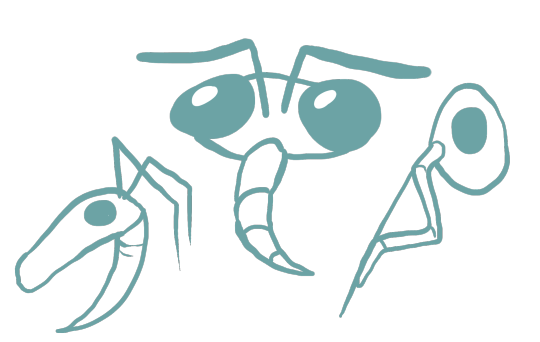
The word “bug” originally referred only to one group of insects, the hemiptera, including stink bugs, assassin bugs, aphids, cicadas, bed bugs and water striders to name a few. One distinguishing feature of this group is that it did away with all those separate mouth parts - all “bugs” have just a single, hollow “beak” or “proboscis” to feed through!
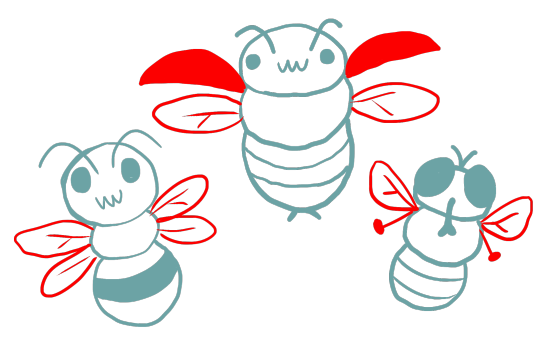
The vast majority of insect groups have wings or at least members with wings, and all insects with wings have FOUR of them…..except that in beetles, the front wings evolved into solid, protective shields for the hind wings, and in true flies (which includes mosquitoes!) the hind wings evolved into tiny little knobs with weights on the end, called halteres, which the fly’s fast-paced brain uses to feel its orientation, altitude, speed, surrounding air pressure and other fine data making them quite possibly the most advanced aerial navigators on the planet. OTHER NOTES THAT DON’T NEED ILLUSTRATION:
Insects and other arthropods HAVE TRUE BRAINS in their heads, made of brain cells like ours. They can learn, memorize, and make decisions.
Insects do have males and females and obviously only females lay eggs. Fiction is always getting this wrong, but I guess it also does so with birds so whatever.
Of insects, only termites, ants, some bees and some wasps have fully evolved a eusocial colony structure with “queens” as we think of them. Of these, the termites are actually highly specialized cockroaches, and the rest (bees, ants, wasps) are the same exact group.
The scrabbling, clicking noise associated with insects is usually added artificially in nature footage for dramatic effect. While their movements likely emit some sort of sound, it’s probably no “louder” proportionately than, say, the sound of a cat’s fur as it walks. In other words it should not be noticeable; what kind of animal survives as a species if it clatters with every step??
Compound eyes do not see a bunch of identical little images. There is no advantage to any organism seeing that way. An insect sees one big picture just like you do.
Only some insect groups have “larvae.” Others have “nymphs” which resemble fully grown but wingless insects.
The only insects with a venomous bite are some true bugs and some flies. There are no beetles or roaches or wasps or anything else that inject offensive toxins through their mouth parts, as far as I know!
The only insects that lay eggs inside other insects parasitically are certain wasps and flies. There are also NO arachnids that do this.
Only certain bees, wasps and ants have stingers on their abdomens. These are modified from egg laying appendages, so it’s also only ever the females.
The only other kind of “sting” in any insect is a venomous hair or spine, mostly seen in caterpillars.
#great info thank you#a lot of the resources on insect anatomy out there are quite dense and technical#this is super approachable!#my worldbuilding involves domesticated large insects and I’m also playing with the idea#of humans keeping and flying large dragonfly-adjacent insects to hunt like falconry#nature#biology#insects#worldbuilding#reference
17K notes
·
View notes
Photo
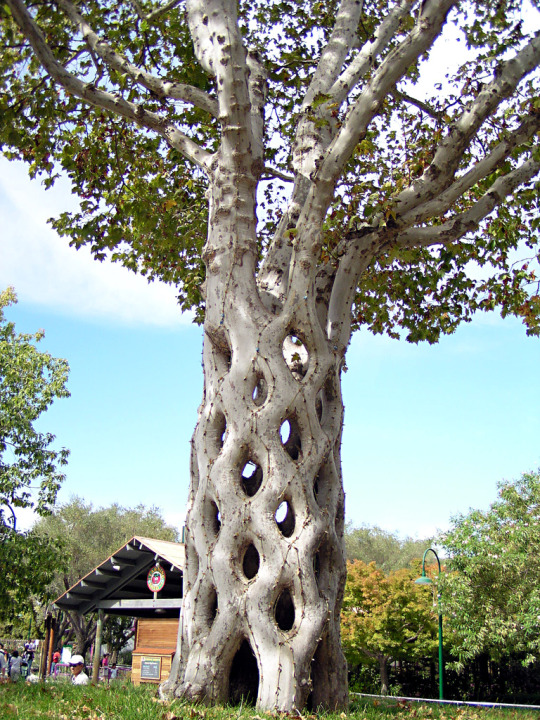
Circus Tree: Six individual sycamore trees were shaped, bent, and braided to form this.
#ok wait if the Striders use arbormancy to control tree growth#then their architecture would totally look like this..#inspo#worldbuilding
824K notes
·
View notes





